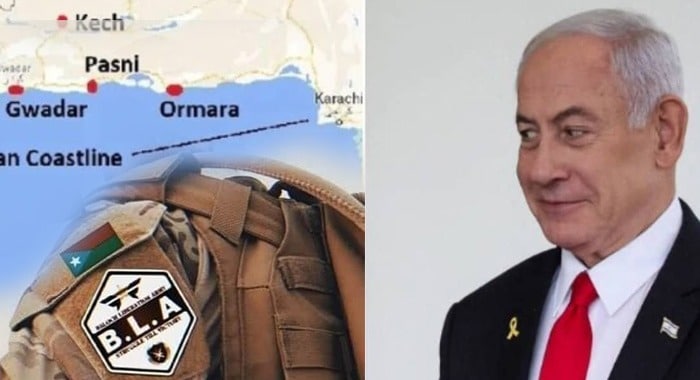At precisely 2:37 AM local time, Israeli F-35I “Adir” stealth fighters and Harop kamikaze drones launched a wave of precision strikes on key Iranian cities including Tehran, Natanz, Isfahan, and Tabriz. But the aerial assault was only the visible tip of a much deeper and more dangerous strategy unfolding in the shadows of South Asia.
Between June 9 and 12, Pakistani intelligence intercepted four classified satellite communications that have since shaken regional security frameworks. Using advanced military SIGINT and Thuraya satellite interception, agencies captured conversations between high-value operatives tied to both Baloch separatist groups and Israeli intelligence.
The code-names used, S-9 (linked to the Balochistan Liberation Army, BLA), F-17 (a top BLF commander), and R-209 (an active Mossad field officer, identified by a distinctive Hebrew accent), point to a trilateral network involving foreign intelligence, separatist militants, and transnational terror objectives.
One conversation, dated June 10 at 10:14 PM, exposed a chilling strategic offer from BLA commander “S-9” to Mossad officer “R-209”: safe passage for Israeli forces through Balochistan’s coastline, in exchange for regional destabilisation. “Pakistan must be kept trapped in internal unrest at all costs,” said S-9, a direct invitation for Israel to establish a covert presence along the Makran coast, between Gwadar and Ormara.
Just hours later, at 3:48 AM on June 11, R-209 gave operational orders to “F-17,” instructing the BLF to execute coordinated bombings in Chabahar (Iran) and Panjgur (Pakistan) within 72 hours, a plan for engineered chaos. Pakistani intelligence confirmed the identities of both operatives through VoiceID technology, matching them to known profiles: BLA’s Abdullah Lehri and BLF’s Allah Nazar.
The motive is clear: Israel seeks a strategic foothold in Balochistan, mirroring its 1980s playbook in southern Lebanon, where it empowered proxy militias to advance regional objectives. For Tel Aviv, Balochistan’s 1,000 km coastline offers unmatched surveillance access over the Gulf, the Strait of Hormuz, and Iranian naval routes. For the Baloch separatists, Israeli backing means weapons, attention, and legitimacy under the guise of a “rights movement.”
Pakistan’s security apparatus also suspects India’s indirect involvement, referred to as the “Fitna-e-Hindustan”… given New Delhi’s historical links to the BLA and its interest in stalling the China-Pakistan Economic Corridor (CPEC).
Evidence of this evolving hybrid threat is mounting. In March 2025, BLA militants hijacked the Jaffar Express, executing passengers in cold blood. In May, a well-coordinated assault on the Surab police station was launched, accompanied by a slick media campaign designed to manipulate public sentiment — a hallmark of modern hybrid warfare.
Current threat assessments indicate a broader operational agenda:
In Iran, BLA-linked agents are reportedly preparing attacks on gas pipelines from Zahedan to Chabahar.
In Pakistan, critical infrastructure, including Gwadar Port, the Coastal Highway, and the Khuzdar–Karachi transmission corridor are high on the hit list for timed sabotage.
At its core, the strategy is twofold:
Trap Pakistan in sustained internal turmoil, crippling its ability to assist Iran diplomatically or militarily.
Disrupt regional trade and energy flows, affecting China, Gulf states, and global markets reliant on maritime security.
This convergence of separatist extremism and foreign intelligence operations presents a grave challenge to regional stability. By co-opting militant movements and weaponizing nationalist grievances, Israel and its partners appear to be executing a long-term destabilisation plan with Balochistan as its staging ground.
What’s being presented to the world as a “struggle for Baloch rights” is increasingly being revealed as a front for geopolitical sabotage. The time for narrative correction is now.





